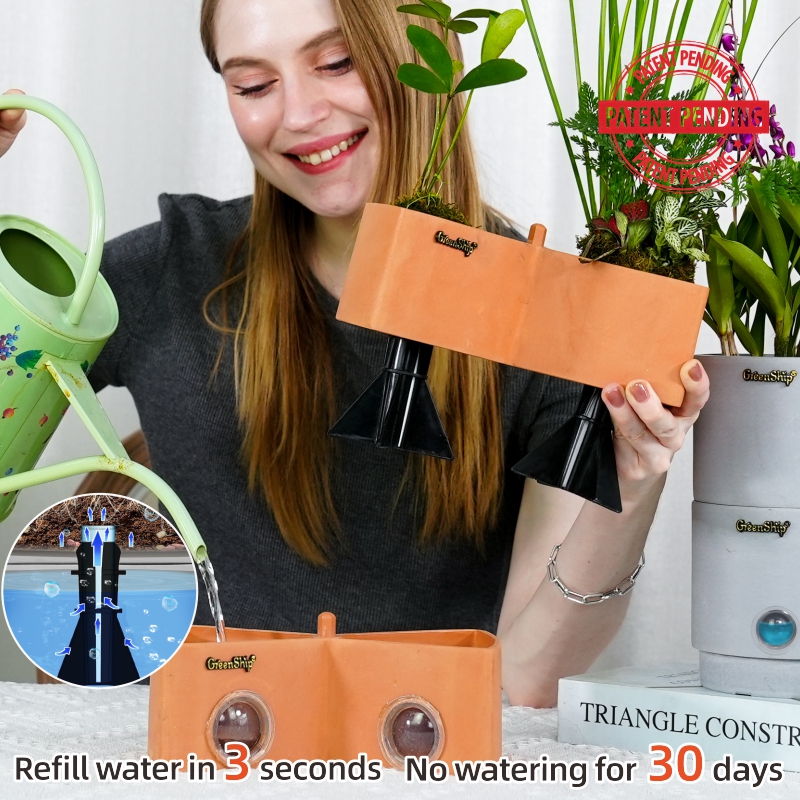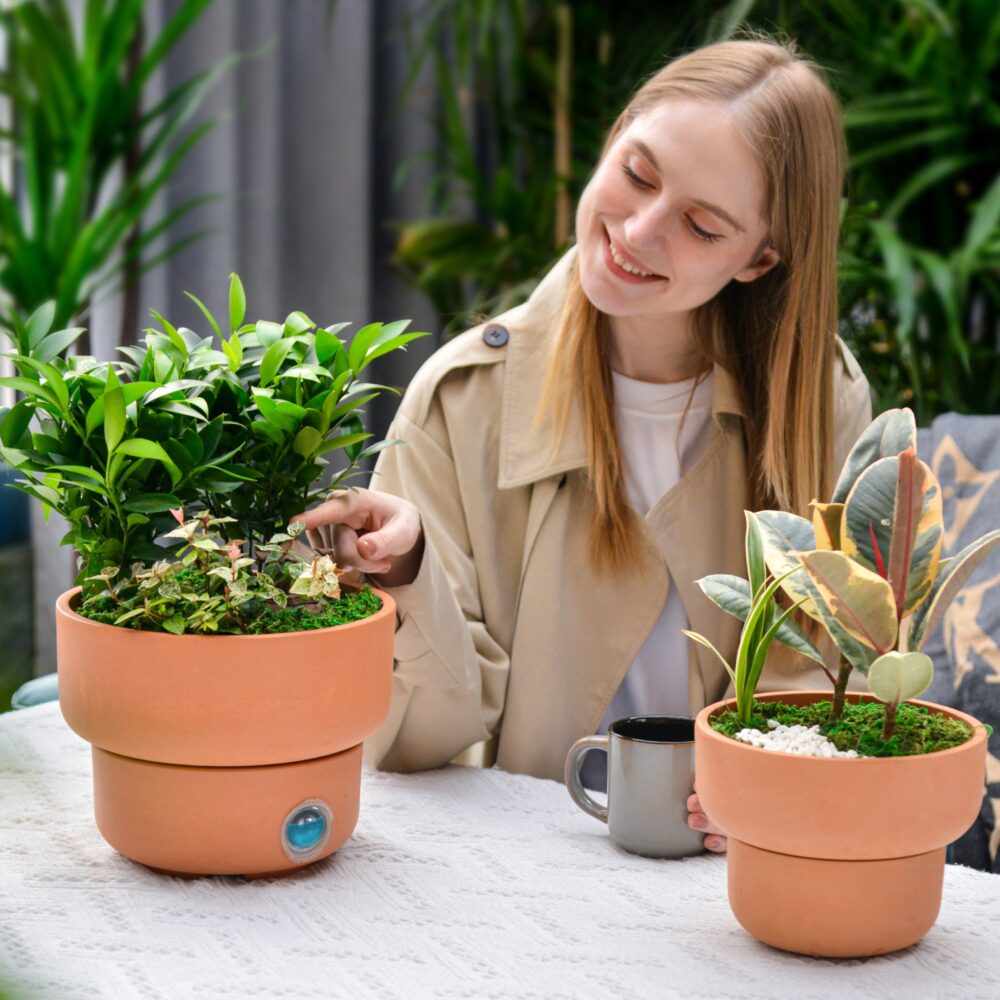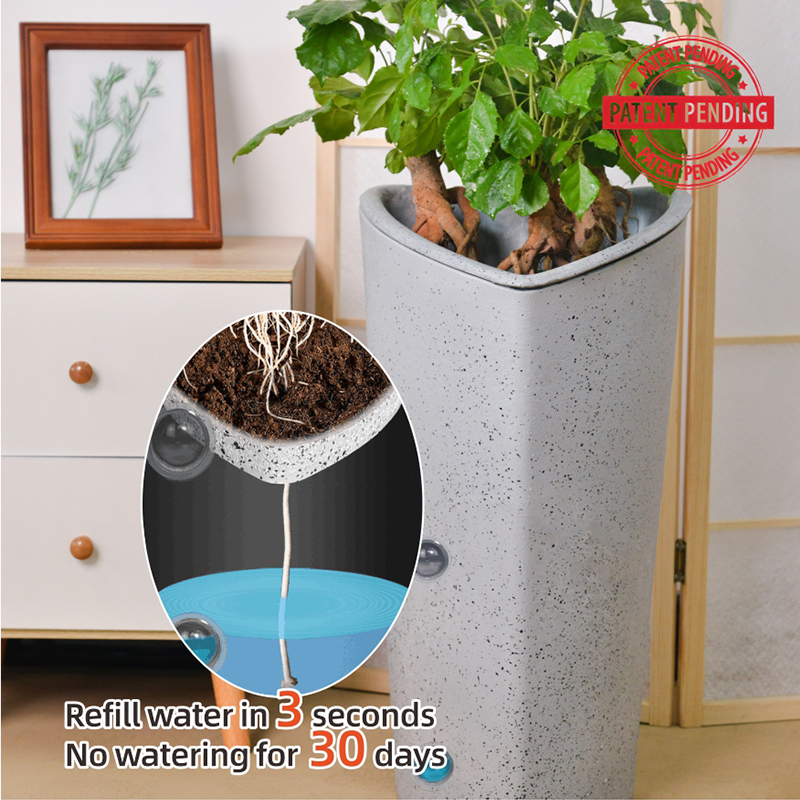Do Indoor Plant Pots Need a Hole in the Bottom?
When it comes to indoor plant care, the presence of drainage holes in plant pots is a critical factor. While some pots are designed without drainage holes, most indoor plant pots benefit significantly from having them. Here’s why drainage is important, along with some exceptions and alternatives.
Why Drainage Holes Are Essential:
- Prevent Root Rot:
- Excess Water Drainage: Drainage holes allow excess water to escape from the pot. If water accumulates at the bottom of a pot without drainage, it can create a stagnant environment where the roots are constantly submerged in water. This leads to root rot, a common cause of plant death.
- Root Suffocation: Without proper drainage, waterlogged soil can suffocate plant roots, preventing them from getting the oxygen they need for healthy growth.
- Improved Aeration:
- Air Circulation: Drainage holes facilitate better air circulation around the roots, which is crucial for promoting healthy root growth. The roots need access to oxygen to avoid fungal infections and other issues associated with stagnant soil.
- Balanced Moisture:
- Prevents Overwatering: Proper drainage ensures that water doesn’t sit in the pot, reducing the chances of overwatering. It helps keep the soil moist but not waterlogged, striking a balance that is beneficial for most plants.

Exceptions to the Rule:
While most plants benefit from pots with drainage holes, there are a few exceptions where drainage holes may not be necessary or even desirable:
- Self-Watering Pots:
- Built-in Reservoir System: Self-watering pots are designed with a built-in water reservoir and a wicking system that draws water up to the roots. These pots provide a consistent moisture level without requiring drainage holes, making them ideal for those who may struggle with overwatering.
- How They Work: Water is stored in a separate reservoir beneath the plant’s soil, and the wicking system helps deliver moisture directly to the roots, preventing water from sitting in the pot’s base.

- Decorative Pots Without Drainage:
- For Aesthetic Appeal: Some decorative pots are designed without drainage holes, primarily for aesthetic purposes. However, if you’re using a decorative pot without drainage, there are ways to still ensure your plant’s health:
- Pot-within-a-Pot Method: Plant your plant in a smaller pot with drainage holes, and then place the smaller pot inside the decorative pot. This allows you to still drain excess water while keeping the aesthetic appeal of the decorative pot.
- Adding Gravel or Pebbles: For pots without drainage, you can add a layer of gravel or pebbles at the bottom. This helps with water flow, but it’s not a perfect solution, and the excess water may still pool at the base if not monitored carefully.
- For Aesthetic Appeal: Some decorative pots are designed without drainage holes, primarily for aesthetic purposes. However, if you’re using a decorative pot without drainage, there are ways to still ensure your plant’s health:
Conclusion:
In most cases, indoor plant pots should have drainage holes to ensure proper water management, prevent root rot, and allow for healthy root growth. While self-watering pots and decorative pots without drainage holes offer alternative solutions, it’s essential to ensure the plant’s needs are met. If using a pot without drainage, take extra care in managing watering schedules and consider using a “pot-within-a-pot” method or adding gravel for improved drainage. By choosing the right pot and monitoring water levels, you can keep your plants healthy and thriving.
18A22
By greenship|2024-03-26T01:16:07+00:00March 25, 2024|Categories: HomeOasis Self-Watering System|
Self-Watering Plant Pot Set of 2, Round Planter for Indoor Plants with Self Wicking Stand, Modern Decorative Flower Pots
By greenship-seo|2025-04-10T08:35:28+00:00January 6, 2025|Categories: HomeOasis Self-Watering System|Tags: Decorative Flower Pots, Self-Watering Pots|
11AB
By greenship|2024-03-26T01:17:01+00:00March 25, 2024|Categories: HomeOasis Self-Watering System|



